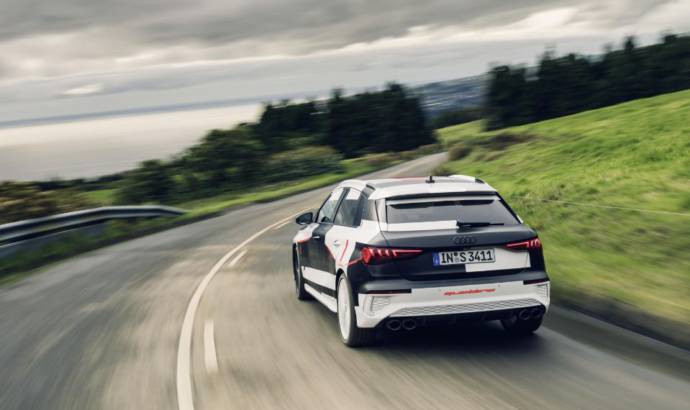After everyone acclaimed the all new Volkswagen Golf, Audi is hurrying up the launch of the new generation A3, the premium brother of the Golf. Compared to the new Golf 8, the Audi A3 will concentrate not only on technology, but also on driving dynamics.
Roads considered challenging enough to be a test of mettle for thoroughbred competition cars on the Azores rally have been chosen to provide a baptism of fire for the quattro system underpinning the all-new Audi A3.
The all-wheel drive system fittingly makes its first appearance in one of the most emotive versions of the fourth generation A3. In Audi models with transverse engine installations is based around an electro-hydraulic multi‑plate clutch.
The clutch is located at the end of the prop shaft, in front of the rear axle differential – a position that benefits the axle load distribution in particular. Inside is a package of plates that operate in an oil bath. Its metal friction rings are arranged behind one another in pairs – one ring of each pair is rigidly meshed with the clutch housing, which rotates with the prop shaft; the other ring is meshed with the short output shaft to the rear axle differential.
Audi tailored the electronic torque distribution control specifically to suit the new A3 and integrated it in the Audi drive select dynamic handling system. It takes the data of the suspension sensors into account and detects not only the driving conditions and road properties but also the driving style. The control unit uses this data as a basis to calculate a torque distribution that provides optimum efficiency and passes the value on to the clutch. This is particularly efficient.
The all-wheel drive distributes the torque with full variability between the front and rear axles. During normal driving operation, the majority of the engine’s power is transmitted to the front wheels. When driving off or when the front axle has little traction, the clutch diverts the torque at lightning speed: In this case, an electric axial-piston pump is activated, which applies up to 44 bar of hydraulic pressure to the clutch plates. The more the clutch plates are pressed together by this pump, the more drive torque is transmitted to the rear axle – the maximum is 100 percent.
The clutch can already transmit part of the torque to the rear axle when the driver begins to make quicker turns of the steering wheel during more challenging driving. As soon as the driver accelerates, the torque presses the A3 into the corner. During load changes, the distribution of torque allows precise turning into the bend, which further increases driving dynamics.
The electromechanical progressive steering that will be a feature of more performance-oriented versions of the new Audi A3 solves this conflict. Its toothed rack and pinion have a special shape and toothing. This results in different gear ratios depending on the steering angle. When the steering wheel is turned quickly during faster driving, it is smaller and the steering is very direct. This decreases the steering effort in urban traffic and while manoeuvring and increases the level of comfort considerably.
On twisting roads, the progressive steering facilitates an even more spirited driving style. The steering wheel has to be turned just 2.5 times between locks; the steering ratio in the centre position is 14.3:1. The power assistance is in perfect harmony with this character and adapts to the driving speed. At low speeds, it is higher in order to enable easier manoeuvrability; as the speed increases, the power assistance is decreased continuously. This allows the driver to experience reassuringly weighty steering feel even when driving at high speed on the motorway.



